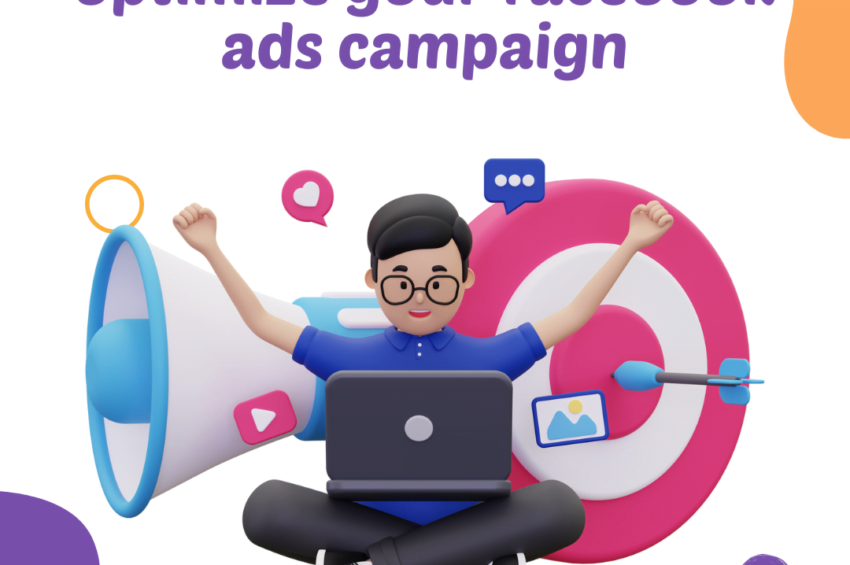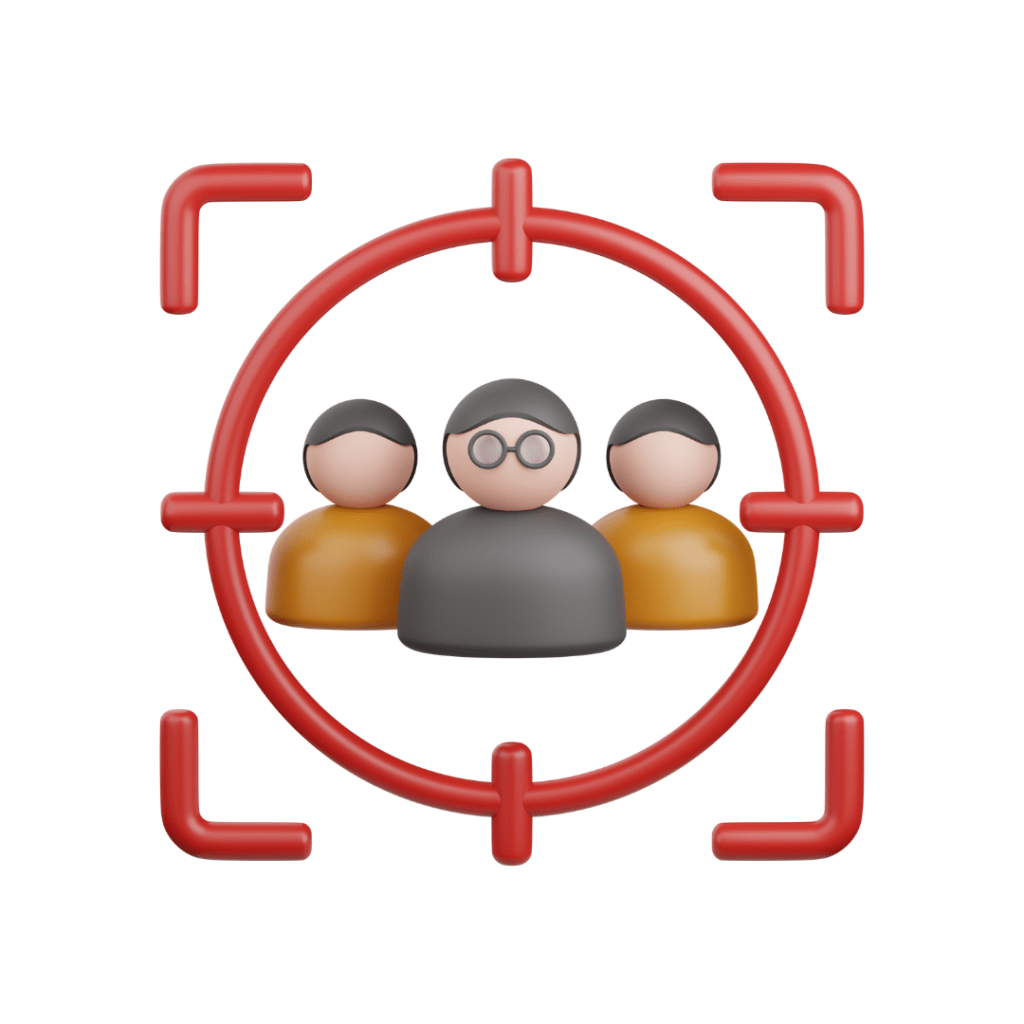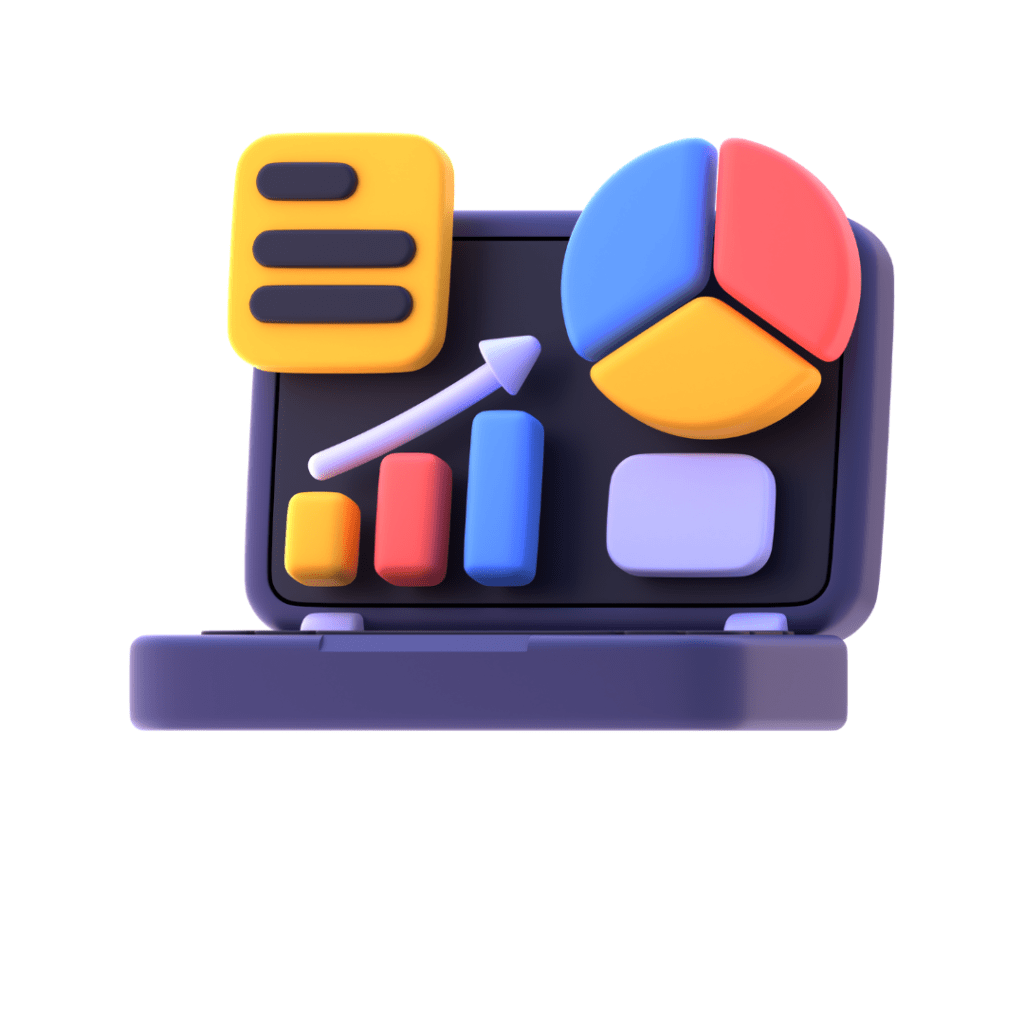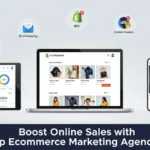
1. Introduction: Understanding the Importance of Optimizing Facebook Ads Performance
2. Setting Clear Objectives: Defining Goals and Metrics for Successful Ad Campaigns
3. Targeting the Right Audience: Strategies to Reach the Most Relevant Users
4. Compelling Ad Creative: Crafting Engaging and Visually Appealing Ads
5. A/B Testing: Maximizing performance through experimentation and analysis
6. Budget Optimization: Allocating funds effectively for optimal results
7. Ad Placement and Formats: Selecting the right ad placements and formats for your campaign
8. Tracking and Analytics: Utilizing data and insights to refine and optimize ad performance
In today’s digital landscape, Facebook has become a prominent platform for businesses to reach and engage with their target audience. However, simply running ads on Facebook is not enough to ensure success. To maximize the effectiveness of your advertising efforts, it is crucial to optimize the performance of your Facebook ads. This article will provide valuable insights and strategies to help you enhance the performance of your Facebook ads, ultimately driving better results for your campaigns. From setting clear objectives and targeting the right audience to crafting compelling ad creative and implementing data-driven optimizations, we will explore various techniques to help you optimize your Facebook ads and achieve optimal ROI.
1. Introduction: Understanding the Importance of Optimizing Facebook Ads Performance

1.1 The Impact of Ad Performance on Campaign Success
When it comes to running Facebook ads, optimizing their performance is crucial for achieving campaign success. Why? Well, picture this: you spend hours crafting the perfect ad, targeting your audience just right, and setting up goals. But if your ad doesn’t perform well, all that effort goes down the drain. It’s like arranging a blind date for your friend and they show up wearing a mismatched outfit with spinach in their teeth. Not a great first impression, right?
The performance of your Facebook ads directly affects their effectiveness in reaching your target audience, generating engagement, and ultimately driving conversions. By carefully optimizing your ad performance, you can increase brand awareness, attract potential customers, and see a boom in your sales figure
1.2 Key Factors Affecting Facebook Ad Performance
Now that we understand the importance of optimizing ad performance, it’s time to identify the key factors that affect how your ads perform. Think of these factors as the ingredients that make up the secret reciepe of a successful Facebook ad campaign. Here are some crucial elements to consider:
– Ad relevance: Does your ad resonate with your target audience? Is it as relatable as a “your face when” meme? If your ad isn’t relevant to your audience’s interests, they’ll scroll right past it faster than a cat chasing a laser pointer.
– Ad placement: Where your ad appears on Facebook can greatly impact its performance. Are you showing up in users’ newsfeeds, messenger apps, or the right-hand column? It’s like picking a seat at a fancy dinner party – choose wisely!
– Ad format: Are you using images, videos, carousels, or a combination? Different formats have different effects on engagement and conversion rates. It’s like choosing what to wear to a party – sometimes a tuxedo is overkill, and other times, a t-shirt works.
By paying attention to these factors and optimizing your ads accordingly, you’ll set yourself up for success. Now let’s move on to the next step: setting clear objectives for your Facebook ad campaigns.
2. Setting Clear Objectives: Defining Goals and Metrics for Successful Ad Campaigns

2.1 Establishing Specific and Measurable Goals
Before diving into Facebook ad optimization, it’s crucial to establish specific and measurable goals for your campaigns. It’s like planning a road trip without knowing where you’re headed – you might end up lost in the middle of nowhere, and nobody wants that.
Clearly defining your goals will help you focus your efforts to measure success. Whether it’s increasing brand awareness, driving website traffic, or boosting sales, make sure your goals are as clear as a sunny day without a cloud in sight.
2.2 Identifying Relevant Metrics for Tracking Performance
Once you’ve set your goals, it’s time to identify the metrics you’ll use to track the performance of your Facebook ads. These metrics are like the fuel gauge in your car – they indicate how far you’ve gone and how much farther you can push it.
Metrics like click-through rate (CTR), conversion rate, cost per click (CPC), and return on ad spend (ROAS) can provide valuable insights into the effectiveness of your campaigns. By monitoring these metrics, you can make data-driven decisions to optimize your ad performance and achieve your objectives. It’s like having a GPS system guiding you through the ever-changing landscape of Facebook advertising.
Now that we’ve got our goals and metrics set, let’s move on to the next step: targeting the right audience for maximum impact!
3. Targeting the Right Audience: Strategies to Reach the Most Relevant Users
3.1 Defining Your Target Audience and Personas
When it comes to Facebook ad optimization, reaching the right audience is like finding your soulmate – it makes all the difference. Start by defining your target audience and creating detailed buyer personas. Who are you trying to reach? What are their interests, demographics, and online behaviors? The more you know about your audience, the better you can tailor your ads to resonate with them.
3.2 Utilizing Facebook’s Audience Targeting Features
Facebook offers a bunch of audience-targeting features to help you reach the right people. From demographics and interests to behaviors and connections, you can narrow down your audience to a tee. It’s like playing a game of darts, but instead of throwing blindfolded, you have a map of the target right in front of you!
3.3 Segmenting Your Audience for Better Ad Relevance
To take your targeting to the next level, consider segmenting your audience based on specific characteristics or behaviors. This allows you to create highly relevant ads that speak directly to different segments of your audience. It’s like having a personalized message for each guest at your party – they’ll feel special, and your ads will perform better than a random uncle testing your patience.
Now that we’ve locked onto our target audience, it’s time to focus on crafting compelling ad creative – the cherry on top of your Facebook ad optimization cake!
4. Compelling Ad Creative: Crafting Engaging and Visually Appealing Ads

4.1 Designing Eye-Catching Visuals and Graphics
When it comes to Facebook ads, first impressions matter more than a sneeze in a library. Design eye-catching visuals and graphics that grab attention and make users stop scrolling. Use vibrant colors, captivating images, and bold typography to create ads that are as visually appealing as a perfectly plated dish at a Michelin-starred restaurant.
4.2 Writing Persuasive Ad Copy
Great visuals are important, but without persuasive ad copy, your ads might fall flat like a cheesecake without cheese. Write compelling, concise, and persuasive ad copy that communicates your message clearly and persuades users to take action. It’s like having a conversation with a friend – be engaging, informative, and maybe even throw in a little inside joke or two.
4.3 Incorporating Calls-to-Action (CTAs) for Better Engagement
Finally, don’t forget to include strong and clear calls-to-action (CTAs) in your ads. A CTA is like leading your audience to the dance floor – it tells them what to do next. Whether it’s “Shop Now,” “Sign Up,” or “Learn More,” make sure your CTA stands out and prompts users to click. Give them a reason to take action, or they might just wave goodbye like a friend who ate all your fries without sharing with you.
By following these tips and optimizing your Facebook ads for performance, you’ll be well on your way to achieving impressive results. Remember, it’s not rocket science, but it does require a bit of strategy, creativity, and a sprinkle of digital marketing magic. So go forth, optimize those ads, and may the Facebook algorithm be ever in
5. A/B Testing: Maximizing performance through experimentation and analysis

5.1 Understanding the importance of A/B testing in ad optimization
Have you ever wondered why some Facebook ads perform better than others? The secret lies in A/B testing. By running experiments with different variations of your ads and analyzing the results, you can identify what works best for your target audience. A/B testing allows you to optimize your ads based on data-driven insights rather than mere guesswork, leading to improved performance and better return on investment.
5.2 Choosing elements to test and measure
When it comes to A/B testing your Facebook ads, it’s important to focus on specific elements that can have a significant impact on performance. Elements like headline, copy, visuals, call-to-action buttons, and even targeting options can all be tested individually to determine which variations resonate best with your audience. Keep in mind that it’s best to test one element at a time to accurately measure its impact on ad performance.
5.3 Analyzing and implementing results to improve performance
Once you’ve conducted your A/B tests and collected the necessary data, it’s time to analyze the results and implement changes accordingly. Look for patterns and trends in the performance metrics such as click-through rates, conversion rates, and engagement levels. Based on this analysis, you can make informed decisions about which ad variations to keep, modify, or discard. Continuous testing and optimization will help you refine your ads over time and achieve better results.
6. Budget Optimization: Allocating funds effectively for optimal results

6.1 Determining an appropriate ad budget
One of the keys to optimizing Facebook ads performance is ensuring that you allocate an appropriate budget. Consider your campaign objectives, target audience size, and the competitiveness of your industry. It’s important to strike a balance between investing enough to reach your desired audience and avoiding overspending. Start with a conservative budget and gradually increase it as you gather data and learn what works best for your business.
6.2 Optimizing bidding strategies for cost-efficiency
Facebook offers different bidding strategies to optimize your ad spend. Experiment with different options like cost per click (CPC), cost per mille (CPM), or cost per action (CPA) to find the most cost-efficient approach for your campaign. Track the performance of each bidding strategy and adjust accordingly to get the best results while staying within your budget.
6.3 Monitoring and adjusting budget allocation based on performance
Optimizing your ad budget is an ongoing process. Regularly monitor the performance of your ads and make adjustments to your budget allocation as needed. If certain ads or campaigns are consistently delivering strong results, consider allocating more budget towards them. On the other hand, if certain ads are underperforming, it may be wise to reallocate budget to more effective campaigns. Stay vigilant and adapt your budget allocation based on the data you receive.
7. Ad Placement and Formats: Selecting the right ad placements and formats for your campaign
7.1 Exploring different ad placement options
Facebook offers various ad placement options, including the news feed, right column, instant articles, and audience network. Each placement has its own advantages and target audience. Experiment with different placements to see which ones resonate best with your target audience and achieve the desired outcomes for your campaign. Remember, the placement of your ad can greatly impact its visibility and engagement.
7.2 Choosing the most effective ad formats for your goals
In addition to ad placement, selecting the right ad format is crucial for optimizing performance. Facebook provides various ad formats, such as image ads, video ads, carousel ads, and collection ads. Consider your campaign goals and the type of content that will resonate most with your audience. Test different ad formats to see which ones generate the highest engagement and conversions for your objectives.
7.3 Testing and optimizing ad placements and formats
The key to effective ad placement and format optimization is continuous testing and refinement. Monitor the performance of your ads across different placements and formats, and make adjustments based on the results. Keep an eye on metrics like reach, click-through rates, and conversion rates to gauge the effectiveness of each combination. By testing and optimizing ad placements and formats, you can maximize your ad’s visibility, engagement, and overall performance.
8. Tracking and Analytics: Utilizing data and insights to refine and optimize ad performance

The power of optimization lies in tracking and analytics. Facebook provides robust tracking tools and analytics that allow you to gather valuable data about your ad performance. Dive into the metrics and insights provided by Facebook’s Ads Manager to understand which ads are performing well and which ones need improvement. Leverage this data to refine your targeting, messaging, and creative choices. The more you analyze and utilize the data, the better you can optimize your ads and achieve your desired results.
In conclusion n, optimizing the performance of your Facebook ads is not just a one-time task, but an ongoing process that requires attention and analysis. By implementing the strategies and techniques outlined in this article, you can improve the effectiveness of your ads, reach the right audience, and achieve your campaign goals. Remember to continually monitor and analyze your ad performance, adapt your strategies as needed, and stay updated with the latest features and trends on Facebook’s advertising platform. With dedication and a data-driven approach, you can optimize your Facebook ads and unlock the full potential of this powerful platform for your business. Start implementing these strategies today and watch your Facebook ad performance soar.
FAQ
1. How long does it take to see improvements in Facebook ad performance after optimization?
The timeline for seeing improvements in Facebook ad performance can vary depending on various factors such as the extent of optimization implemented, the size of your audience, and the competitiveness of your industry. Some optimizations, such as targeting adjustments or ad creative changes, may yield noticeable results within a few days or weeks. However, it is important to monitor the performance over an extended period to determine the long-term impact of your optimizations.
2. Can I optimize Facebook ad performance without increasing my budget?
Yes, it is possible to optimize Facebook ad performance without necessarily increasing your budget. By implementing targeted audience segmentation, refining ad creative, and utilizing A/B testing, you can improve the effectiveness of your ads and achieve better results without additional expenses. Effective optimization strategies can help you make the most of your existing budget while maximizing your return on investment.
3. Is it necessary to hire a professional marketer to optimize Facebook ad performance?
While hiring a professional marketer can bring valuable expertise and experience to your Facebook ad optimization efforts, it is not always necessary. With access to resources and knowledge available online, you can learn and implement optimization techniques yourself. By educating yourself about best practices, staying updated with platform changes, and actively monitoring and adjusting your ads, you can effectively optimize your Facebook ad performance without external assistance.
4. How frequently should I analyze and adjust my Facebook ad optimizations?
Regular analysis and adjustment of your Facebook ad optimizations are essential for ongoing success. It is recommended to monitor your ad performance at least weekly and analyze key metrics such as click-through rates, conversions, and return on ad spend. Based on the insights gained, make adjustments to your targeting, ad creative, or other elements to optimize performance. Flexibility and continuous improvement are key to achieving optimal results with your Facebook ads.



